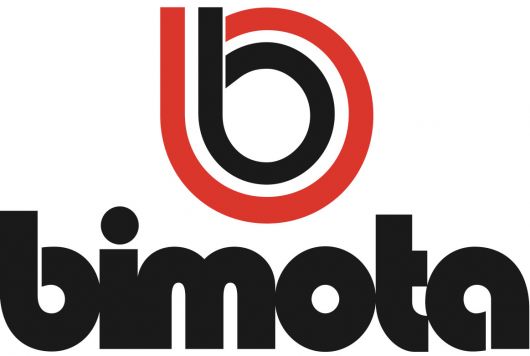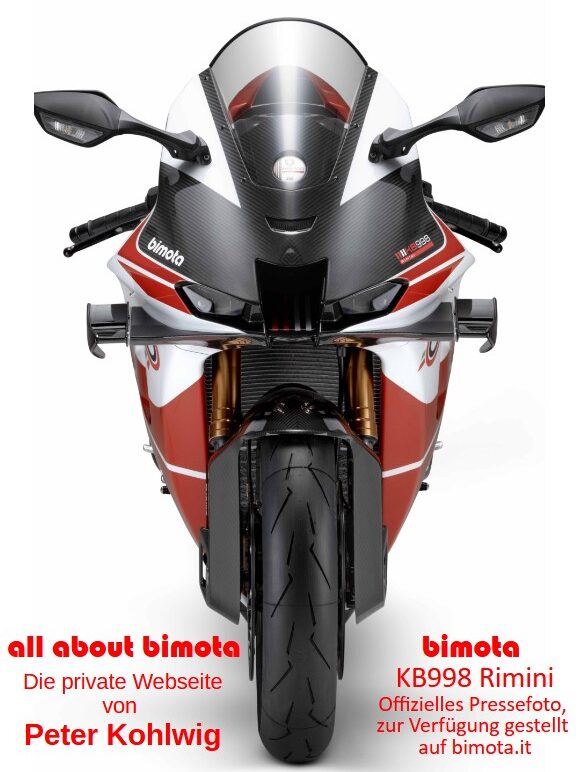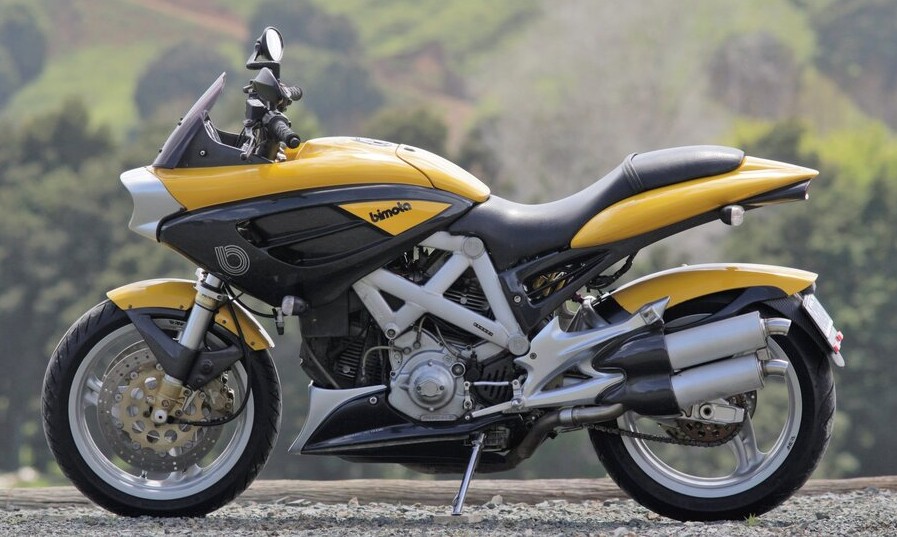
| Designer | Pier Luigi Marconi (chassis) Sacha Lakic (body) | Premiere | Cologne 1994 |
| Production period | 1995 – 1998 | Production numbers | 454 |
| Power | 58 KW (80 PS) | Displacement | 904 cc |
| Topspeed | 194 km/h | Weight | Vollgetankt 194 kg Leergewicht 172 kg |
| Price | 29.900 DM (1995) | Colours | 426 yellow / black 28 red / black |
| Techncal basis | Ducati Monster | Ducati 900 Supersport |
With the DB3 Mantra, Bimota expands its model range to attract new customers. It is the first Bimota with no racing ambitions, featuring a naked design and an upright seating position, targeting the café racer and naked bike market. The design of the DB3 polarizes the motorcycle community, with reactions ranging from „totally ugly“ to „beautiful.“
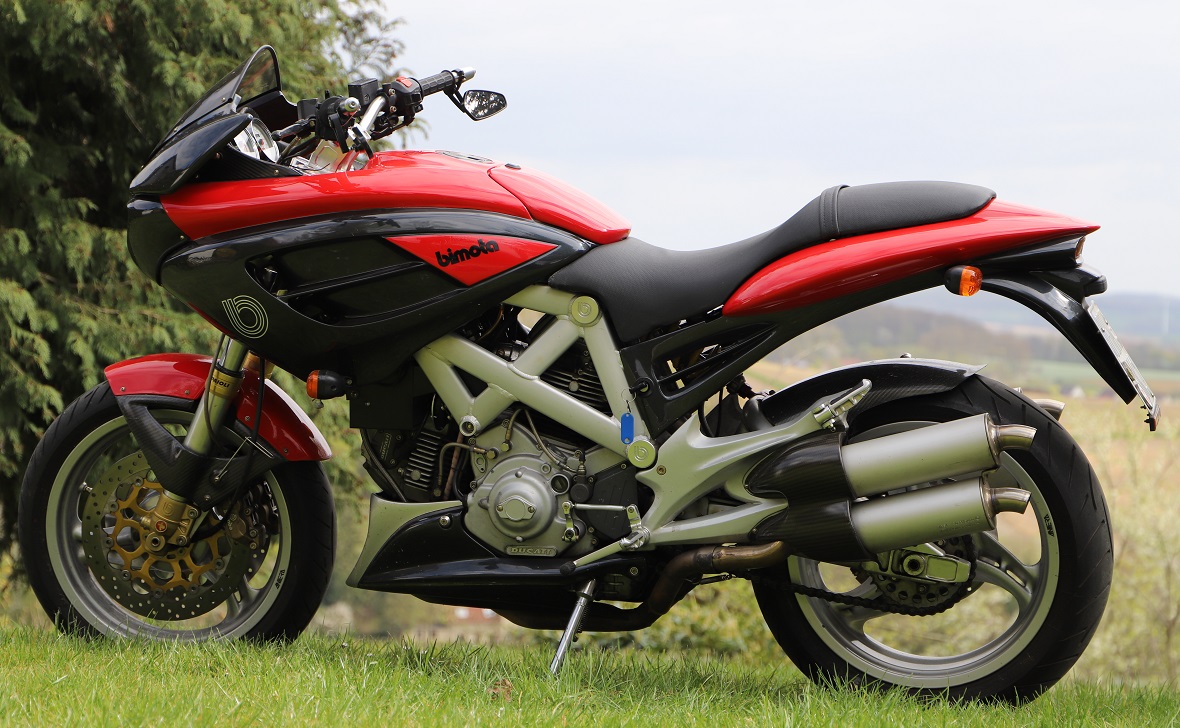
The chassis consists of a newly developed aluminum bridge-frame that integrates the engine as a load-bearing element. It features welded triangular oval profiles and a bolted steel rear subframe. The front wheel is guided by a 43 mm Paioli fork, while the triangular aluminum swingarm, mounted in the engine housing, is directly linked to a centrally mounted Paioli shock absorber.
The well-proven Brembo Gold braking system, with two 320 mm discs at the front and a 230 mm disc at the rear, provides effortless stopping power for the lightweight Mantra. The three-spoke Anterra wheels measure 3.5 inches wide at the front with 120/70 tires and 5.5 inches wide at the rear with 180/55 tires.
The powertrain comes from the DB2, featuring the air- and oil-cooled, two-valve, 90° V-twin engine from the Ducati 900 Supersport and Monster.
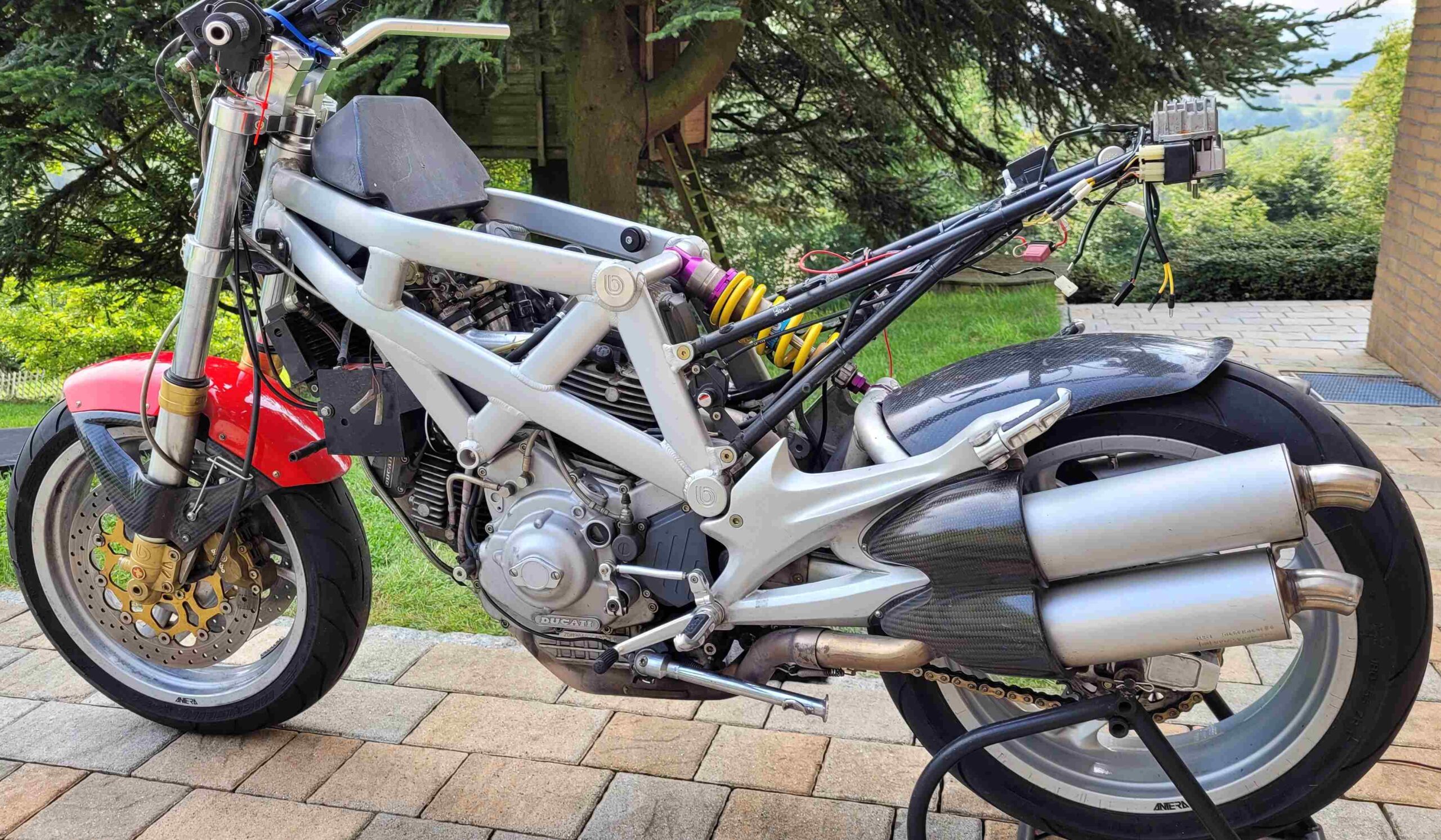
For the design, Bimota’s chief engineer Pier Luigi Marconi enlisted the help of French designer Sacha Lakic, who was responsible for the bike’s distinctive styling. The visual identity is dominated by the plastic fuel tank, which wraps around the steering head, integrating the front headlight, cockpit, and fairing. A practical detail is the storage compartment built into the tank. From both side and top views, the tank and tail section form a harmonious, flowing line. Another eye-catching element is the 2-in-4 exhaust system, with partially carbon-clad silencers and a striking, single-piece footpeg mount for both rider and passenger.
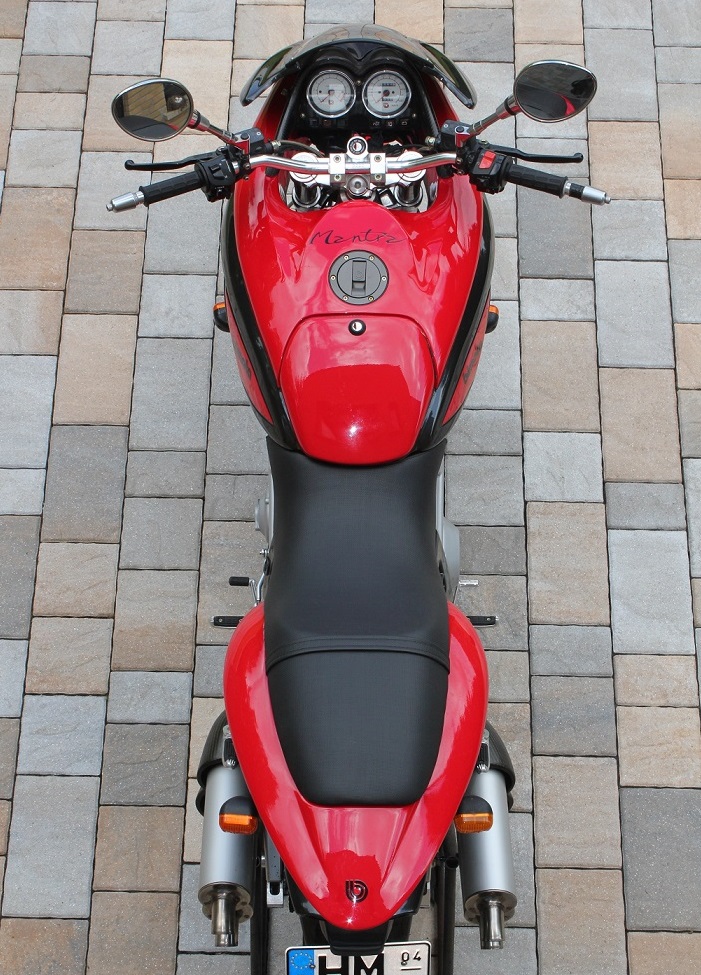
Despite its bold styling, the DB3 remains a true Bimota, offering the brand’s renowned quality, handling, and exclusivity.
At the Milan Motorcycle Show in 1997, the DB3 received minor modifications. With a new cockpit fairing, a redesigned front headlight, a revised rear fender, and a handlebar replacing the previous clip-ons, it entered its final two years of production. A second-generation model in the rare red-black color scheme can be seen in the two photos above. The top image shows the Mantra with aftermarket mirrors, while the lower one features the somewhat unconventional original mirrors.
